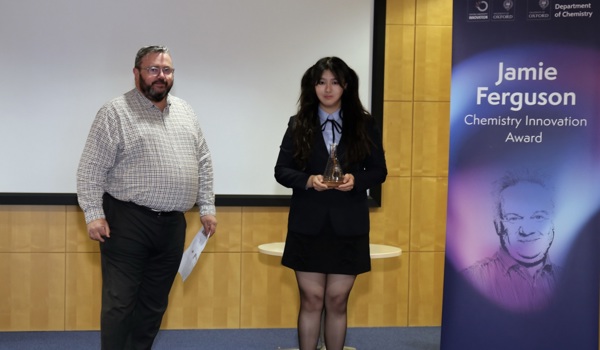Biography
Felix completed both his M.Eng. and D.Phil. in the Department of Engineering Science, University of Oxford, and was a student at Trinity College throughout.
After his D.Phil. under the supervision of Professor Alexander Korsunsky, he spent six months as a PhD+ scholar in Oxford. In January 2012 he moved to MIT to work in Prof. Keith Nelson group. Felix returned to Oxford as an academic in January 2013. He is now Professor of Engineering Science and also a college lecturer at Trinity College.
Teaching
In the Department of Engineering Science, Felix gives lecture courses on solid mechanics and materials, and organises laboratory sessions. He enjoys supervising research students and usually has a number of undergraduates and DPhil students in his group. At Trinity Felix teaches tutorials on engineering mathematics, mechanics and materials.
Most Recent Publications
Correlated chromium carbide dissociation and phase transformation in liquid lead-bismuth eutectic corroded T91 steel
Correlated chromium carbide dissociation and phase transformation in liquid lead-bismuth eutectic corroded T91 steel
Simultaneous proton irradiation and dissolution corrosion of SS316L in liquid Pb-4Bi alloy
Simultaneous proton irradiation and dissolution corrosion of SS316L in liquid Pb-4Bi alloy
Deformation induced microstructure of stress relieved Zircaloy-4 cladding
Deformation induced microstructure of stress relieved Zircaloy-4 cladding
The link between Microstructural Heterogeneity, Diffusivity, and Hydrogen Embrittlement
The link between Microstructural Heterogeneity, Diffusivity, and Hydrogen Embrittlement
Direct imaging of hydrogen-driven dislocation and strain field evolution in a stainless steel grain
Direct imaging of hydrogen-driven dislocation and strain field evolution in a stainless steel grain
Research Interests
Atomic scale defects are central to the mechanical, physical and failure properties of almost all structural alloys. These defects may, for example, be introduced by mechanical deformation, chemical changes or irradiation. Felix’s group works on characterising these defects and understanding the dramatic changes to material behaviour they may cause. To probe their structure and properties we use a wide range of experimental techniques: X-ray diffraction and electron microscopy to study the structure of defects; Nano-indentation and micro-mechanics to investigate the changes in mechanical properties defects cause; Transient grating spectroscopy, a laser-based technique, to explore how thermal transport and elastic properties evolve in the presence of defects.
These experiments are combined with models that cover a wide range of length scales, from single atoms to macroscopic components. Currently much of my group’s effort is focussed on understanding how materials inside future fusion reactors evolve. This is a very challenging environment, and understanding the drivers for material degradation has been a real scientific treasure hunt! We also work on many other exciting problems, for example materials at high pressures and temperatures in Earth’s mantle; the effect of hydrogen on structural components central to the hydrogen economy; understanding the nano-scale origins of corrosion; or how to build the next generation of optimised stunt scooters!
Research Groups
Most Recent Publications
Correlated chromium carbide dissociation and phase transformation in liquid lead-bismuth eutectic corroded T91 steel
Correlated chromium carbide dissociation and phase transformation in liquid lead-bismuth eutectic corroded T91 steel
Simultaneous proton irradiation and dissolution corrosion of SS316L in liquid Pb-4Bi alloy
Simultaneous proton irradiation and dissolution corrosion of SS316L in liquid Pb-4Bi alloy
Deformation induced microstructure of stress relieved Zircaloy-4 cladding
Deformation induced microstructure of stress relieved Zircaloy-4 cladding
The link between Microstructural Heterogeneity, Diffusivity, and Hydrogen Embrittlement
The link between Microstructural Heterogeneity, Diffusivity, and Hydrogen Embrittlement
Direct imaging of hydrogen-driven dislocation and strain field evolution in a stainless steel grain
Direct imaging of hydrogen-driven dislocation and strain field evolution in a stainless steel grain





